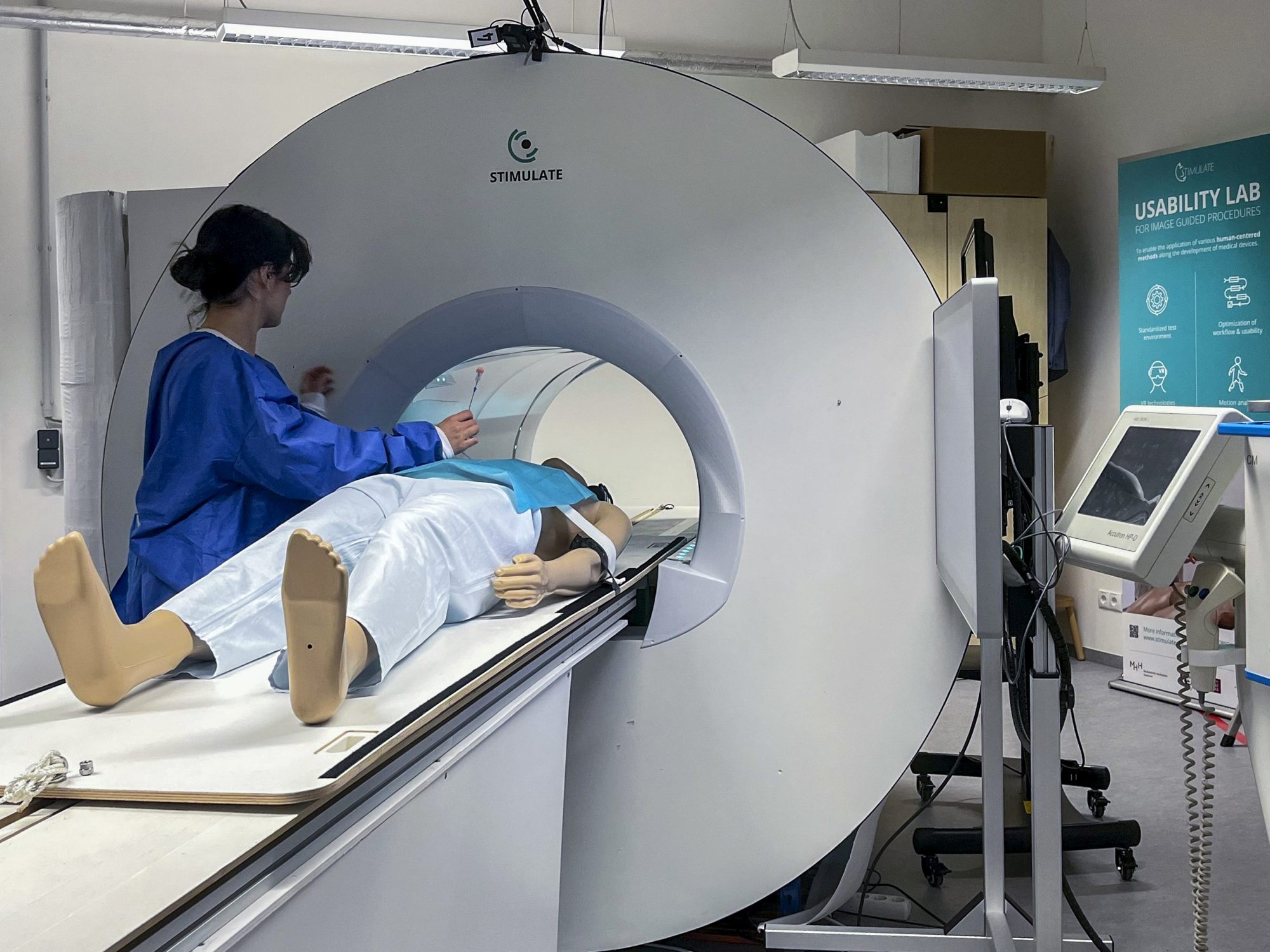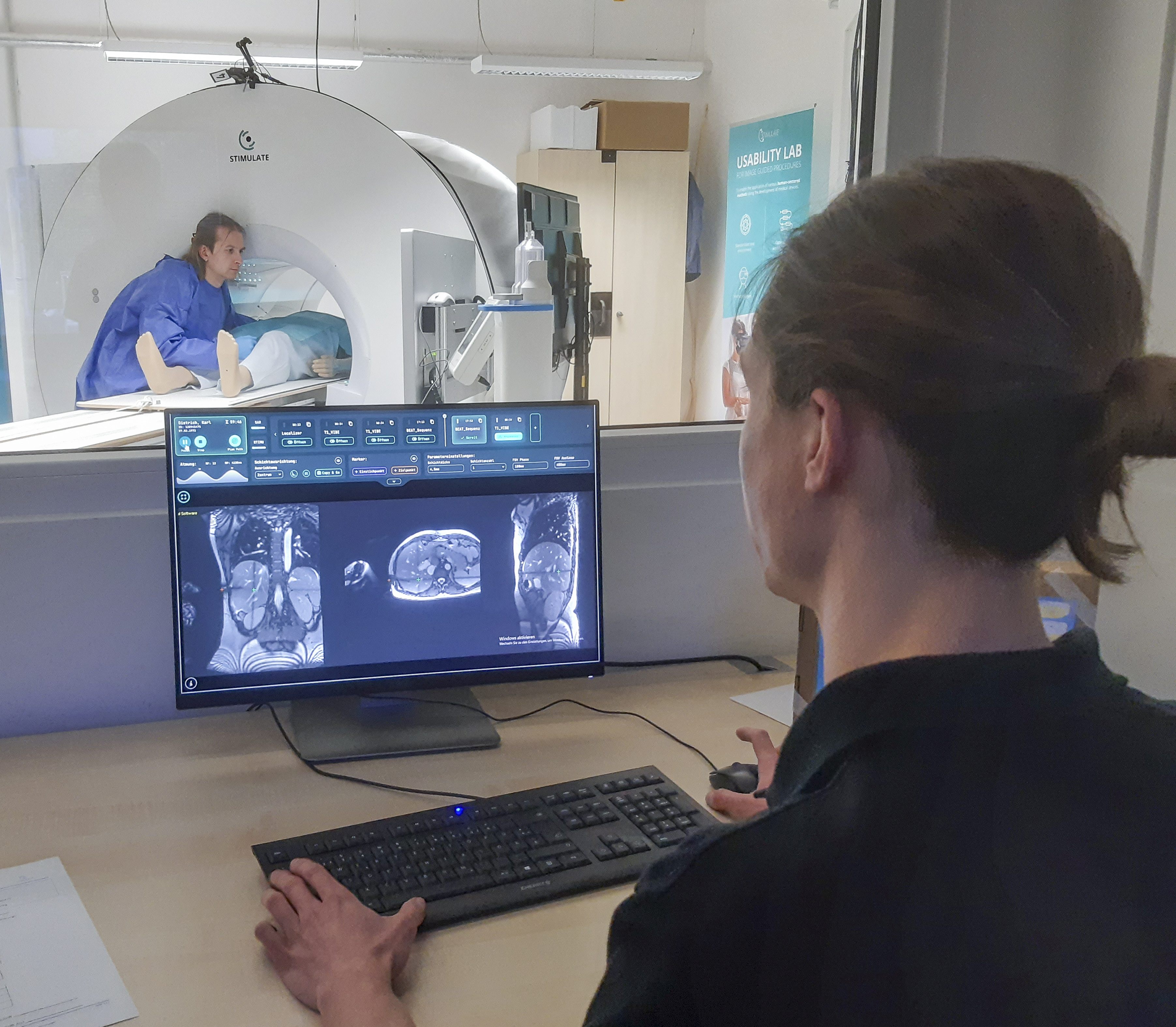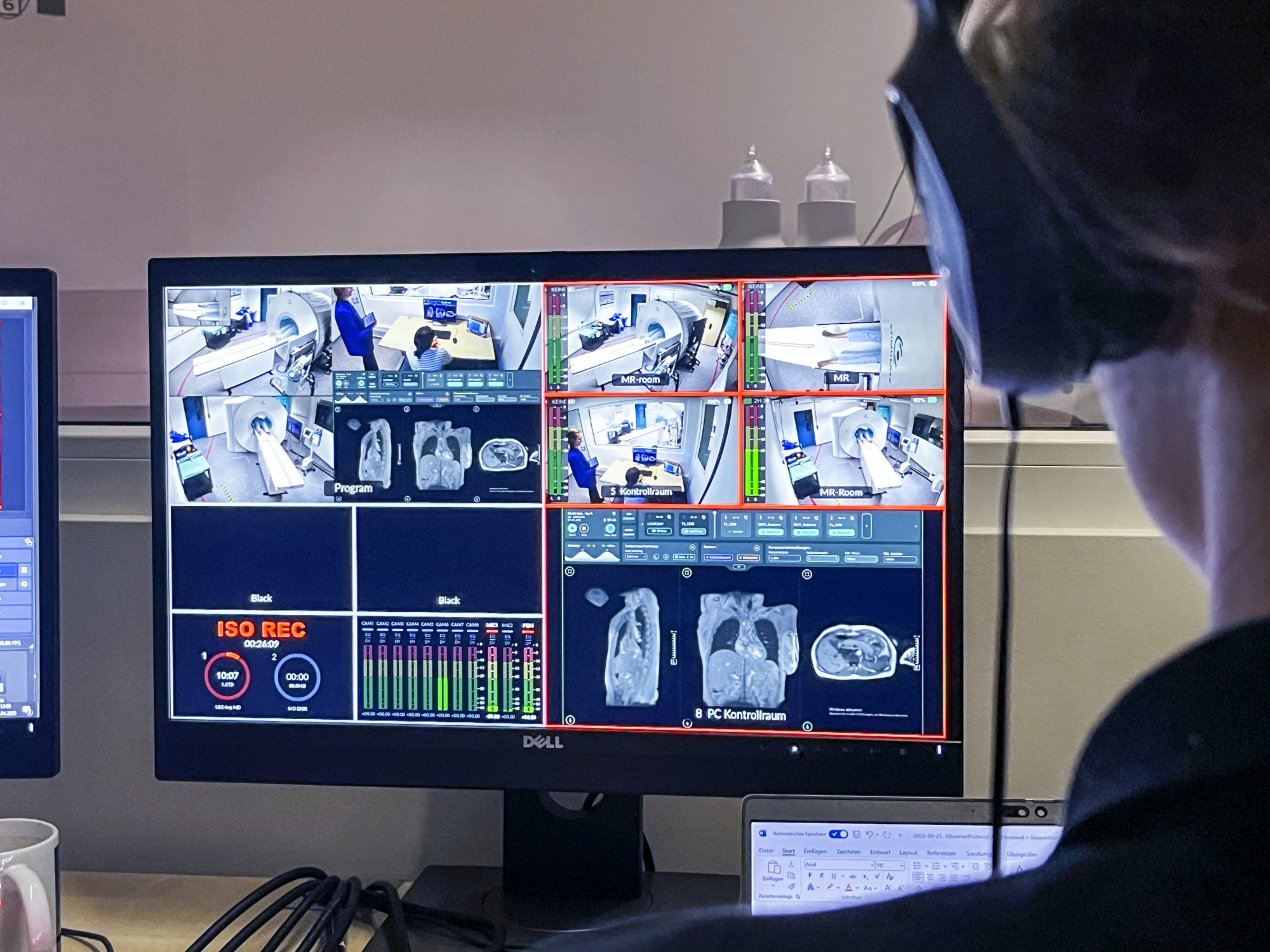NEWS
First practical tests of new iMRT software and coil technology successfully completed at the Research Campus STIMULATE
After intensive development work and detailed preparation, two prototypes specially designed for interventional magnetic resonance imaging (iMRI) were tested for the first time in a practical usability study in the iMRI usability laboratory at the Research Campus STIMULATE on 25 April 2025 - planning software and a new type of coil concept developed for the special requirements of minimally invasive procedures using MRI imaging. Together with radiologists, usability engineers and MRI physicists from Hannover Medical School (MHH), USE-Ing. GmbH and Otto von Guericke University Magdeburg, key functions were tested in realistic application scenarios. Both solutions were designed from the ground up with a focus on interventional applications - an area in which existing systems often have to be used in an improvised manner as they were not originally designed for this purpose.
The new software makes it easier for medical professionals to navigate through complex processes such as patient management, imaging and needle planning in a targeted and clear manner. It has been designed to support the workflow, reduce unnecessary complexity and adapt flexibly to different device configurations.
A new approach was also tested in the area of coil technology, which was specially designed for interventional applications. Receiving coils are central components in magnetic resonance imaging - they ‘receive’ the image signals from the body and thus ensure the necessary image quality. Thanks to its innovative design, the new coil offers the best possible access to the puncture site. This means that the biopsy or ablation needle can be placed exactly where it is clinically required and advanced with maximum precision - without compromising sterility.
The findings from the study will help to further improve both prototypes - so that future iMRI procedures can be prepared even more specifically, performed without unnecessary interruptions and better adapted to everyday clinical practice. We would like to thank all participants for their dedicated contribution to this practical development step in the STIMULATE research project.
Erste Praxistests neuer iMRT-Software und Spulentechnologie am Forschungscampus STIMULATE erfolgreich
Nach intensiver Entwicklungsarbeit und detaillierter Vorbereitung wurden am 25. April 2025 zwei speziell für die interventionelle Magnetresonanztomographie (iMRT) entworfene Prototypen im iMRT-Usability-Labor des Forschungscampus STIMULATE erstmals in einer praxisnahen Nutzungsstudie erprobt – eine Planungssoftware und ein neuartiges Spulenkonzept, entwickelt für die besonderen Anforderungen minimal-invasiver Eingriffe unter MRT-Bildgebung. Gemeinsam mit Radiolog:innen, Usability-Ingenieur:innen und MRT-Physiker:innen der Medizinischen Hochschule Hannover (MHH), der USE-Ing. GmbH und der Otto-von-Guericke-Universität Magdeburg wurden zentrale Funktionen in realitätsnahen Anwendungsszenarien getestet. Beide Lösungen wurden von Grund auf mit Fokus auf die interventionelle Anwendung gedacht – ein Bereich, in dem vorhandene Systeme bislang häufig improvisiert genutzt werden müssen, da sie ursprünglich nicht dafür ausgelegt sind.
Die neue Software erleichtert es medizinischem Fachpersonal, gezielt und übersichtlich durch komplexe Abläufe wie Patient*innenmanagement, Bildgebung und Nadelplanung zu navigieren. Sie wurde so gestaltet, dass sie den Arbeitsfluss unterstützt, unnötige Komplexität reduziert und sich flexibel an unterschiedliche Gerätekonfigurationen anpasst.
Auch im Bereich der Spulentechnologie wurde ein neuer Ansatz getestet, welcher speziell für interventionelle Anwendungen konzipiert wurde. Empfangsspulen sind zentrale Komponenten in der Magnetresonanztomographie – sie „empfangen“ die Bildsignale aus dem Körper und sorgen damit für die nötige Bildqualität. Durch ein innovatives Design bietet die neuartige Spule bestmöglichen Zugang zur Einstichstelle. So kann die Biopsie- oder Ablationsnadel exakt dort platziert werden, wo sie klinisch erforderlich ist, und mit maximaler Präzision vorgeschoben werden – ohne dass die Sterilität beeinträchtigt wird.
Die Erkenntnisse aus der Studie helfen dabei, beide Prototypen weiter zu verbessern – damit künftige iMRT-Eingriffe noch gezielter vorbereitet, ohne unnötige Unterbrechungen durchgeführt und besser auf den Klinikalltag abgestimmt werden können. Unser herzlicher Dank gilt allen Teilnehmenden für ihre engagierte Mitwirkung an diesem praxisnahen Entwicklungsschritt im STIMULATE-Forschungsvorhaben.


